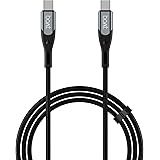Whenever I interview health and nutrition experts, I make it a point to ask about their go-to supplements, and they almost always highlight omega-3-rich foods and supplements. These beneficial polyunsaturated fats, derived primarily from alpha-linolenic acid (ALA), are celebrated for their antioxidant and anti-inflammatory effects. Omega-3s support a range of health benefits, from heart and brain function to joint, eye, and skin health. They’re also known to strengthen the immune system, reduce anxiety, improve sleep quality, and may help protect against conditions like heart disease, arthritis, and Alzheimer’s. In short, they are vital molecules for our well-being.
These essential Omega-3 fats—specifically EPA (eicosapentaenoic acid) and DHA (docosahexaenoic acid)—are especially important for our bodies because they cannot be synthesised naturally. Instead, they need to be obtained through dietary sources, such as fish oil, krill oil, or, ideally, Omega-3-rich foods. Specialists recommend an intake of at least 250 milligrams of EPA and DHA daily to support health, from reducing inflammation to bolstering heart and brain function. However, Omega-3 levels are often low in the typical Western diet, which tends to be richer in Omega-6 and Omega-9 fats that can have pro-inflammatory effects. For a more balanced and anti-inflammatory effect, experts suggest increasing Omega-3 intake through diet or quality supplements.
To boost your Omega-3 intake, prioritize foods rich in EPA and DHA, primarily found in fatty fish like salmon, sardines, and mackerel. Just two servings of these fish per week generally provide enough to meet the recommended daily intake. Omega-3s are also present in plant-based sources like walnuts, flaxseeds, and chia seeds, which contain alpha-linolenic acid (ALA). While ALA can convert to EPA and DHA in the body, this conversion is limited to around 15%. By including both animal and plant sources of Omega-3s in your diet, you ensure a steady supply of these essential fats for heart, brain, and overall health.
13 foods rich in omega-3
1 Mackerel
Part of the forage fish, and although considered a “poor” fish, mackerel is packed with nutrients: 100 grams contains about 500% of the recommended daily intake of vitamin B12 and 130% of that of selenium. In addition, it provides as much as 4580 milligrams of omega-3 in the form of EPA and DHA per 100 grams. This protein-dense oily fish, ubiquitous in the Mediterranean and parts of the Atlantic, has a rich flavour and buttery texture and is quick to cook on the grill, in the oven, or in a pan.
2 Salmon
Ubiquitous in food influencer stories, salmon is the ultimate anti-ageing beauty food. It contains, among other things, vitamin D, vitamin A, vitamin B12, minerals such as potassium phosphorus and magnesium, and 2150 milligrams of EPA and DHA per 100 grams. If available, source it fresh and cook it lightly steamed, as omega-3s are sensitive to heat. If you love raw fish, enjoy it as sushi or sashimi, and if you prefer it smoked, choose it wild and of good quality.
3 Herring
These blue fish, which are abundant in the North Atlantic and North Seas of Europe (and especially Norway), are nutritionally rich and a fantastic source of omega 3: 100 grams contain as much as 2150 milligrams of EPA and DHA. They are also rich in selenium and vitamin B12. Commercially often precooked, smoked or marinated, they lend themselves to the preparation of salads such as the herring beet and red onion salad, or the hyper-fancy orange, fennel and herring salad.
4 Chia seeds
These little seeds are stars of breakfast pudding and dessert recipes loved by celebrities like Meghan Markle. They are rich in protein, essential amino acids, and minerals like selenium, manganese and magnesium. And they contain 5050 milligrams of omega-3 per 28 grams, in the form of ALA (alpha linoleic acid). The easiest way to make sure you regularly enjoy the benefits of chia seeds? Add a teaspoon to your morning protein shake.
5 Flaxseed oil
Flaxseed oil is among the best dietary sources of alpha-linolenic acid (ALA): one tablespoon of flaxseed oil contains 2350 milligrams of anti-inflammatory ALA. This oil is also rich in protein, minerals, and lignans, phytochemical complexes with antioxidant properties. Consume it raw in salads and soups. Dip sourdough bread with croutons in it. And you can even use it as a compress to moisturise your hair.
6 Sardines
These small fish, especially when eaten whole, are a powerhouse of nutrients: they contain fralaltro vitamin D, selenium and vitamin B12. In addition, 150 grams of canned sardines provide 1463 milligrams of EPA and DHA. Eat them barbecued, as is done almost everywhere in Portugal, or buy them canned and add them to salads instead of tuna.
7 Walnuts
What aren’t walnuts good for? Rich in vitamin E and minerals such as copper, manganese, and potassium. iron and phosphorus, they also contain 2570 milligrams of ALA per 28 grams. Crunch them between meals, chop them up in salads, and use them to make an unusual pesto; you’ll get brighter skin, more peaceful sleep, and even a sharper memory.
8 Oysters
If you get the chance and your credit card allows, enjoy a few oysters now and then. These nutrient-packed seafoods contain ALA as well as EPA and DHA: 6 oysters provide 329 milligrams of them. In addition, they are an excellent source of zinc, essential in winter to boost the immune system, copper, selenium and vitamin B12 essential for the nervous system.
9 Hemp seeds
Adopted by vegetarians and vegans as a source of complete protein (they contain all the essential amino acids) hemp seeds are a bombshell of nutrients such as vitamin E, and minerals such as potassium, magnesium, calcium, iron and zinc; and they really are a superfood, also beneficial for skin disorders such as eczema. Also notable is its omega-3 content: 6 tablespoons contain 6703 mg of ALA.
10 Seaweed
Antioxidant, anti-inflammatory, anti-ageing and anti-cancer, seaweeds are a superfood we should eat regularly. They are also a rare plant food that contains both EPA and DHA, in amounts that vary from one type of algae to another. Include them in soups, crumble them on salads and rice, wrap them to create homemade sushi, and, in the absence of anything else, take them in spirulina or chlorella tablets or powder to add to your morning smoothie.
11 Fish oil
Yes, it’s more of a supplement than a food, but fish oil is that girl when it comes to omega-3s. Made from the tissue of oily fish (like the ones above), fish oil is just a straight, potent stuff filled with a mix of fatty acids, including eicosapentaenoic acid (EPA) and docosahexaenoic acid (DHA). Fish oil supplements get a bad rap because sometimes they can leave a fishy aftertaste, but our editor has been taking this brand for years and swears there’s absolutely no flavor at all.
12 Caviar
Fancy—and functional. While caviar (aka fish eggs) may not seem like it’d be healthy, it actually has both essential vitamins and minerals like omega-3 fatty acids, as well as vitamin B12, selenium, and iron. This dish, as like others, is all about moderation, especially because of the way you consume it—on a potato chip or belinni—so 1 to 2 tablespoons is all you need.
13 Soybeans
An endlessly versatile food, soybeans are delicious as edamame and protein-rich tofu. Soybeans contain alpha-linolenic acid (ALA), a type of omega-3 oil. Adding them into every meal—or even preparing your food in soybean oil—adds the nutrient to dishes.
This article first appeared in Vogue.it
All products are independently selected by our editors. If you buy something, we may earn an affiliate commission.
Also read:
Kale juice is the anti-inflammatory drink you should add to your diet
Try these 6 habits to prevent collagen loss, straight from experts
This superfood has more vitamin C than oranges, and you should be eating it
Source link











